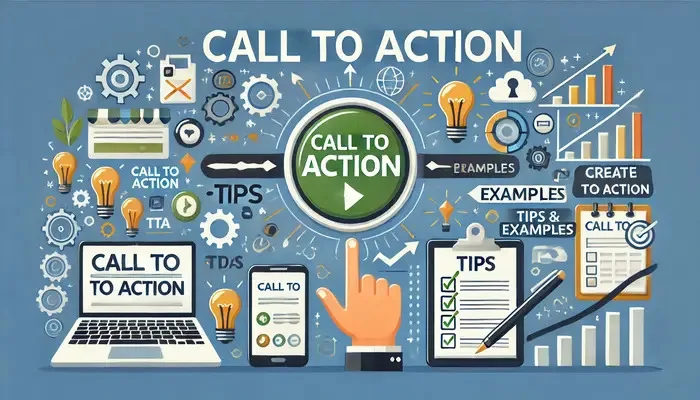
How to Create a Powerful Call to Action: Tips and Examples
A well-crafted call to action (CTA) can significantly boost the effectiveness of your marketing efforts. Whether you’re trying to increase sales, generate leads, or drive website traffic, a compelling CTA is essential. In this article, we will explore what makes a CTA powerful, providing practical tips and examples to help you create CTAs that convert.
What is a Call to Action and Why is it Important?
A call to action is a statement designed to prompt an immediate response from the audience. It directs users to take a specific action, such as signing up for a newsletter, making a purchase, or downloading a resource. The importance of a CTA lies in its ability to guide users towards your desired outcome, making it a crucial element in any marketing strategy.
For instance, consider an online casino like Platin Casino. A CTA on their website might encourage visitors to “Join Now and Get a 100% Welcome Bonus!” This clear, enticing prompt can drive sign-ups and increase user engagement, directly impacting the casino’s revenue.
The Basic Elements of a Successful Call to Action
A successful CTA typically includes the following elements:
- Clarity: The action you want the user to take should be clear and straightforward. Avoid ambiguous language.
- Urgency: Create a sense of urgency to prompt immediate action. Phrases like “Limited Time Offer” or “Act Now” can be effective.
- Value Proposition: Highlight the benefit the user will receive by taking the action. This could be a discount, exclusive content, or another valuable offer.
- Design: The CTA button should stand out visually on the page. Use contrasting colors and ensure it’s easily clickable.
Psychological Aspects of Creating a Call to Action
Understanding the psychology behind a CTA can enhance its effectiveness. Here are some psychological principles to consider:
- Reciprocity: People are more likely to take action if they feel they’ve received something of value. Offer a free resource or a discount to trigger this response.
- Scarcity: Limited availability increases the perceived value of an offer. Use phrases like “Only a few spots left” to create a sense of scarcity.
- Social Proof: Show evidence that others have taken the desired action and benefited from it. Testimonials, reviews, and user counts can build trust and encourage more conversions.
- Fear of Missing Out (FOMO): Emphasize what the user might miss out on if they don’t act. This can be particularly effective in time-sensitive promotions.

Practical Tips for Creating a Call to Action
To create an effective CTA, follow these practical tips:
- Use Action-Oriented Language: Start your CTA with a strong verb. Examples include “Download,” “Join,” “Sign Up,” and “Get.”
- Be Specific: Clearly state what the user will get. Instead of “Click Here,” say “Get Your Free E-book.”
- Keep it Short: A concise CTA is more likely to catch the user’s attention and be understood quickly.
- Test and Optimize: Continuously test different CTAs to see which performs best. A/B testing can help you determine the most effective wording, design, and placement.
Mistakes to Avoid
Avoid these common mistakes to ensure your CTAs are effective:
- Being Vague: Ambiguous CTAs can confuse users and reduce conversions. Be explicit about the action you want them to take.
- Overloading with Information: Too much text around your CTA can be overwhelming. Keep the surrounding content minimal and focused.
- Ignoring Mobile Users: Ensure your CTA is easily clickable on all devices, including smartphones and tablets.
- Failing to Deliver on Promises: If your CTA promises something, make sure you deliver. Broken promises can harm your brand’s reputation and trustworthiness.
Examples of Successful Calls to Action
Here are some examples of effective CTAs:
- HubSpot: “Get Started for Free” – Clear, concise, and offers value with no upfront cost.
- Netflix: “Join Free for a Month” – Highlights a free trial, encouraging users to experience the service without commitment.
- Dropbox: “Try Dropbox Business Free” – Combines a free trial with a specific product offering, appealing to business users.
How to Test and Optimize Your Call to Action
Testing and optimization are critical to maximizing the effectiveness of your CTAs. Here’s how to approach it:
- A/B Testing: Create two versions of your CTA and see which performs better. Test different wording, colors, and placements.
- Analyze Performance Metrics: Use tools like Google Analytics to track the performance of your CTAs. Look at metrics such as click-through rates and conversion rates.
- Iterate Based on Data: Use the insights from your tests to refine your CTAs. Continuously improve based on what works best for your audience.




